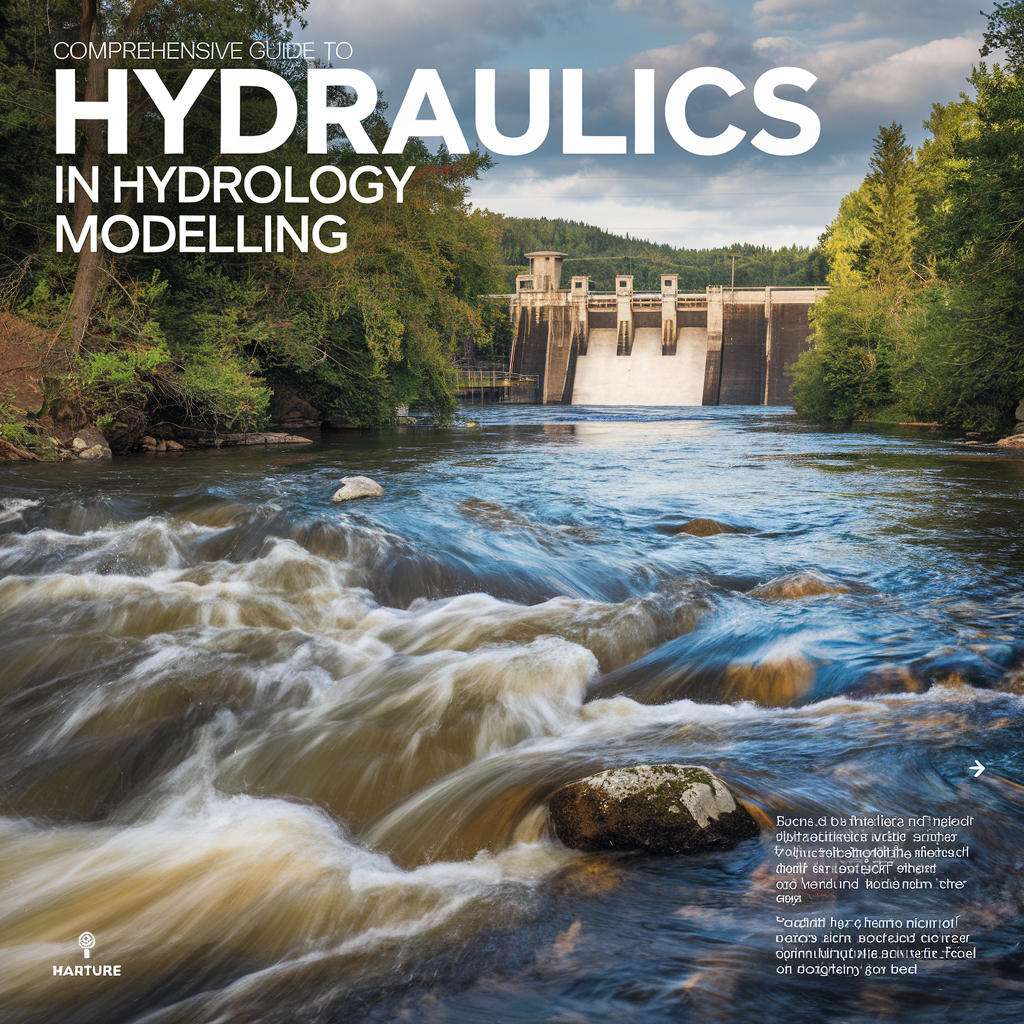Hydraulics is crucial in understanding water systems, especially in hydrology and modelling. In its simplest form, hydraulics refers to the science of the flow and behaviour of water in different environments, including rivers, streams, and underground aquifers. But what does hydraulics mean in hydrology and hydraulics modelling specifically? In this article, we will explore the core concepts of hydraulics and how they are applied to hydrology and hydraulics modelling, providing a thorough understanding of these vital areas in water resource management and environmental engineering.
The Basics of Hydraulics: Understanding Fluid Behavior
At its core, What Does Hydraulics Mean in Hydrology and Hydraulics Modelling is the study of the movement of fluids, particularly water, through various channels and systems. This involves studying forces, velocity, pressure, and flow rate in water bodies such as rivers, lakes, and canals. Hydraulics is essential for predicting and managing water flow in natural and engineered systems.
Hydrology, on the other hand, is the study of water’s distribution, movement, and properties in the Earth’s atmosphere and on its surface. While hydrology focuses on the scientific aspects of water, hydraulics looks at how water moves through systems. Together, these fields contribute significantly to understanding and solving water-related issues.
So, when we ask what does hydraulics mean in hydrology and hydraulics modelling, we refer to how the principles of fluid dynamics are applied in hydrological studies and simulations to predict and manage water flow. Hydraulics modelling is a tool to simulate real-world water behaviour, helping engineers and scientists design water infrastructure, manage flood risks, and protect the environment.
Hydraulics in Hydrology: The Connection Between Water and Landscape
When studying what does hydraulics mean in hydrology and hydraulics modelling, it’s essential to understand the interconnectedness of water flow with the physical landscape. Hydraulics influences hydrological processes like runoff, infiltration, and groundwater flow. Hydrologists can use hydraulic principles to analyse how water behaves in different environments, including hills, valleys, and artificial structures like dams or levees.
For instance, when water flows over land, it interacts with the terrain, forming streams and rivers. Hydraulic engineers apply the principles of hydraulics to determine how water flows through these channels, considering the slope of the land, the type of soil, and the shape of the watercourse. This knowledge helps predict how floods might occur, how water moves through different terrains, and how we can best manage our water resources.
In What Does Hydraulics Mean in Hydrology and Hydraulics Modelling, this connection between hydraulics and the landscape helps scientists determine the rate of flow in rivers and streams, which is crucial for flood forecasting, water supply management, and environmental protection. The ability to accurately predict water behaviour is key to solving water-related challenges and is where hydraulics modelling comes into play.
What Does Hydraulics Mean in Hydraulics Modelling: Simulating Water Flow
Hydraulics modelling is a tool used to simulate the behaviour of water within specific environments or systems. When we ask what does hydraulics mean in hydrology and hydraulics modelling, we’re essentially asking how hydraulic principles are used in computational models to predict water flow, water quality, and flood risks.
Hydraulic models simulate real-world water systems using mathematical equations and physical principles. These models can represent rivers, lakes, reservoirs, urban drainage systems, and coastal areas. Hydraulics modelling allows engineers to evaluate how water behaves under different conditions and helps them design practical solutions for managing water.
There are different types of What Does Hydraulics Mean in Hydrology and Hydraulics Modelling models, including steady-state models, which assume that the flow conditions remain constant over time, and dynamic models, which consider changing water flow and environmental conditions. The complexity of these models depends on the factors being considered, such as water velocity, pressure, turbulence, and channel geometry. By applying hydraulics to these models, engineers and hydrologists can gain insights into how water will behave in future scenarios.
The Importance of Hydraulics in Water Resource Management
Water resource management is one of the main applications of hydraulics in hydrology and hydraulics modelling. Understanding water flow and behaviour allows engineers and policymakers to make informed decisions about constructing dams, bridges, and stormwater drainage systems. Hydraulics plays a vital role in ensuring these infrastructures function efficiently and safely.
For instance, hydrologists use hydraulic models to determine a river’s capacity to handle water flow during heavy rainfall. If a river is unable to accommodate excessive water, it may overflow, causing floods. Hydraulic modelling helps predict when and where these floods might occur, allowing for proper flood management strategies, such as the construction of levees, floodplains, and reservoirs.
In areas prone to drought, understanding what does hydraulics mean in hydrology and hydraulics modelling also helps optimize water use and storage. Hydraulic models can simulate how water moves through aquifers and groundwater systems, allowing for better management of underground water resources and ensuring that communities have a reliable water supply.
Hydraulics and Flood Prediction: Preventing Disasters
One of the most critical hydraulics modelling applications is flood prediction and disaster prevention. What does hydraulics mean in hydrology and hydraulics modelling in the context of flood prediction is the ability to forecast how water will behave during extreme weather events and how it will interact with the landscape.
By using What Does Hydraulics Mean in Hydrology and Hydraulics Modelling models, scientists and engineers can predict how rivers and streams will react to rainfall or melting snow. These models simulate different weather scenarios and help determine how much water will flow into a specific area, how quickly it will accumulate, and where it will flow next. Such models are essential for issuing early warnings and preparing flood control measures.
What Does Hydraulics Mean in Hydrology and Hydraulics Modellingmodelling also helps cities and municipalities design flood-resistant infrastructure. This can include stormwater systems, flood barriers, and floodplain zoning regulations. By understanding how water will flow during a flood, engineers can design cities and infrastructure that minimise flood damage and protect lives and property.
The Future of Hydraulics in Hydrology and Hydraulics Modelling
As technology advances, so does the ability to model and understand water systems. The future of What Does Hydraulics Mean in Hydrology and Hydraulics Modelling in hydrology and hydraulics modelling will likely include more sophisticated models that can predict water behaviour with greater accuracy and speed.
For instance, machine learning and artificial intelligence (AI) are increasingly used in hydraulic models to enhance their predictive capabilities. These technologies can analyse large datasets and generate highly detailed models, helping engineers make more informed real-time decisions.
Integrating hydraulics modelling with geographical information systems (GIS) allows for better visualisation and analysis of water flow patterns about terrain, infrastructure, and weather conditions. This helps improve flood management, urban planning, and environmental conservation efforts.
Conclusion
In conclusion, what does hydraulics mean in hydrology and hydraulics modelling is a question that goes beyond mere definition—it opens up a world of science and engineering that helps us understand and manage one of the Earth’s most important resources: water. Hydraulics is the science of fluid behaviour, while hydraulics modelling allows us to simulate and predict water flow in various environments. By applying these principles in hydrology, engineers and scientists can design solutions to manage water resources effectively, prevent floods, and protect the environment.
Whether it’s flood prediction, water supply management, or environmental conservation, the knowledge of What Does Hydraulics Mean in Hydrology and Hydraulics Modelling and hydraulics modelling is indispensable. As technologyadvancese, the future of hydraulics modelling holds the promise of even greater insights, enabling more accurate predictions and better water management practices to ensure a sustainable future for all.







